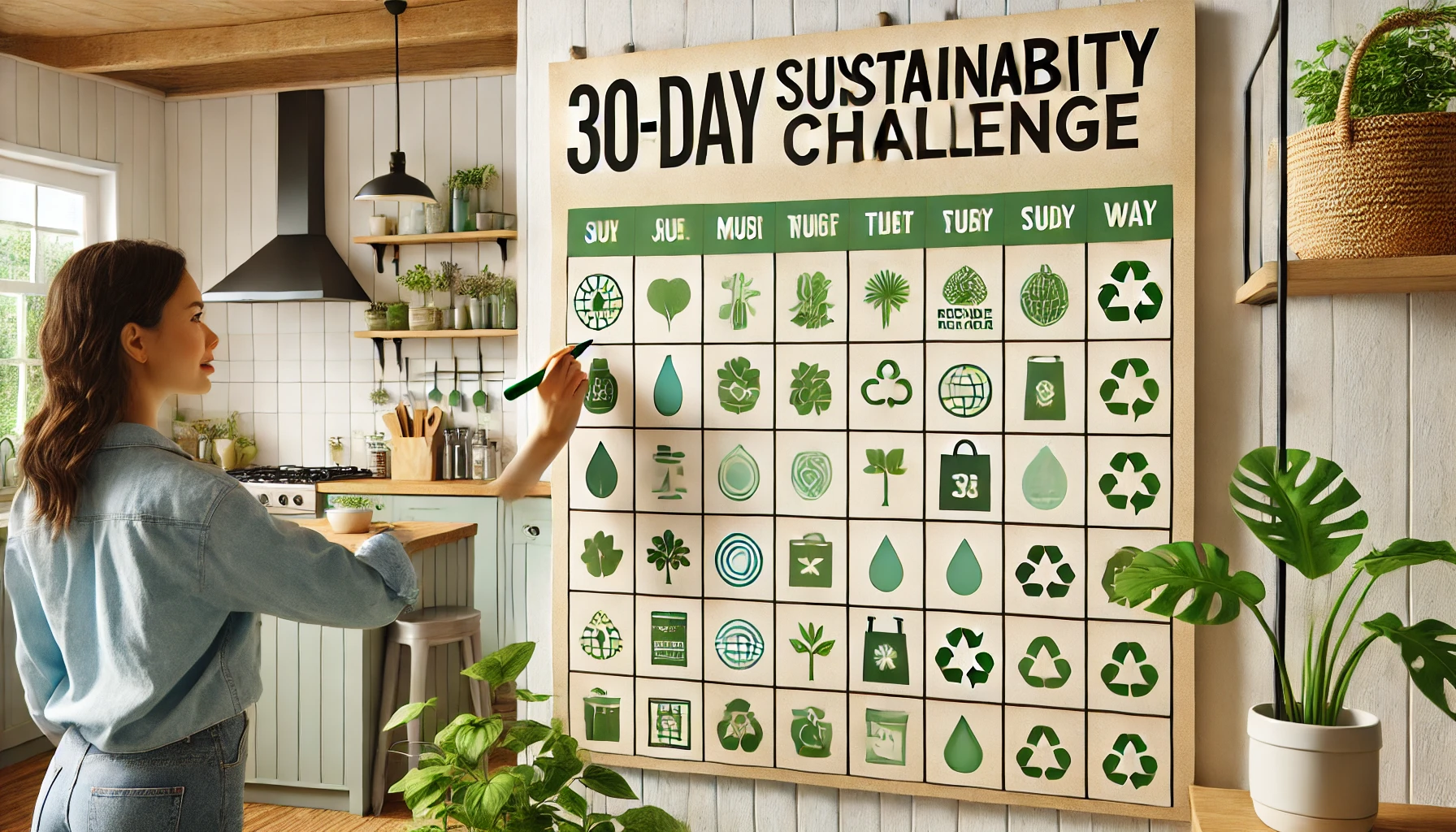Adopting a sustainable lifestyle doesn’t have to be overwhelming. In fact, one of the best ways to build eco-friendly habits is through small, consistent changes. That’s where a 30-day sustainability challenge comes in—it’s a fun, manageable way to inspire change, engage your community, and raise awareness about environmental responsibility.
Whether you’re organizing it for yourself, your family, your workplace, or a larger community, this guide will help you plan and execute a meaningful and impactful 30-day sustainability challenge.
Why a 30-Day Challenge Works
A 30-day challenge is effective because it:
- Encourages incremental changes
- Builds habits through repetition
- Offers a sense of achievement and motivation
- Fosters community engagement
- Makes sustainability practical and fun
The key is to make each daily task simple but significant. Over time, these small actions can lead to big changes in mindset and lifestyle.
Step-by-Step Guide to Organizing Your Challenge
1. Define Your Goals
Start by identifying the purpose of your challenge. Do you want to:
- Raise awareness about climate change?
- Promote zero-waste habits?
- Reduce energy and water consumption?
- Encourage sustainable food choices?
Clearly defined goals will guide your challenge structure and help participants understand the “why” behind their actions.
2. Choose the Daily Activities
Create a calendar of 30 daily sustainability tasks. Keep them varied, realistic, and impactful. Here are a few ideas you can include:
- Day 1: Bring your own reusable bag to the store
- Day 2: Take a shorter shower (under 5 minutes)
- Day 3: Go meatless for the day
- Day 4: Unplug electronics when not in use
- Day 5: Refuse plastic straws and utensils
- Day 6: Start a compost bin
- Day 7: Use a reusable water bottle
- Day 8: Recycle properly
- Day 9: Buy local produce
- Day 10: Clean with natural products
- Day 11: Donate unused clothes
- Day 12: Walk or bike instead of driving
- Day 13: Learn about fast fashion
- Day 14: Support a sustainable brand
- Day 15: Take inventory of food waste
- Day 16: Repair something instead of replacing it
- Day 17: Try a paperless day
- Day 18: Read about the climate crisis
- Day 19: Pick up litter in your neighborhood
- Day 20: Share a sustainability tip on social media
- Day 21: Shop secondhand
- Day 22: Plant something (herbs, flowers, a tree)
- Day 23: Make a DIY eco-friendly product
- Day 24: Replace one item with a sustainable alternative
- Day 25: Avoid single-use plastics
- Day 26: Host a clothes swap
- Day 27: Learn about your carbon footprint
- Day 28: Avoid fast fashion for a week
- Day 29: Support a local farmer’s market
- Day 30: Reflect and plan future eco-goals
3. Create Materials and Resources
Make your challenge easy to follow by designing:
- A downloadable calendar or checklist
- Daily email prompts or social media posts
- Fun graphics and motivational quotes
- Educational links for each activity
You can use platforms like Canva for visuals and tools like Google Docs or Trello to organize tasks.
4. Choose a Platform for Engagement
Decide how you’ll connect with participants. Some great options include:
- A private Facebook group
- A WhatsApp or Telegram group
- Instagram using a custom hashtag (e.g., #30DaysGreen)
- An email newsletter series
Encouraging daily check-ins, photos, or shared experiences will keep people engaged and motivated.
5. Include Rewards or Incentives
People love recognition! Offer small incentives such as:
- A digital certificate of completion
- Eco-friendly product giveaways
- Highlighting participant stories on social media
- Special badges or progress trackers
Even simple rewards boost participation and commitment.
6. Reflect and Measure Impact
At the end of the 30 days, reflect on what was achieved:
- How many people participated?
- Which tasks were the most popular?
- What challenges did participants face?
- What new habits were formed?
Use surveys or group discussions to collect feedback. This information can help you improve future editions or turn the challenge into an ongoing sustainability initiative.
Making It Personal
While group challenges are powerful, this can also be a solo journey. If you’re doing it alone or with your household, consider journaling your experiences, sharing them online, or making short videos to document your growth. Personal stories are a great way to inspire others.
Final Words: Small Steps, Big Change
A 30-day sustainability challenge is more than a trend—it’s a gateway to a more intentional and eco-conscious lifestyle. It empowers people to take responsibility for their environmental footprint while building a sense of purpose and community.
Remember, you don’t have to be perfect. Every small effort counts. What matters most is starting—and inspiring others to do the same.
